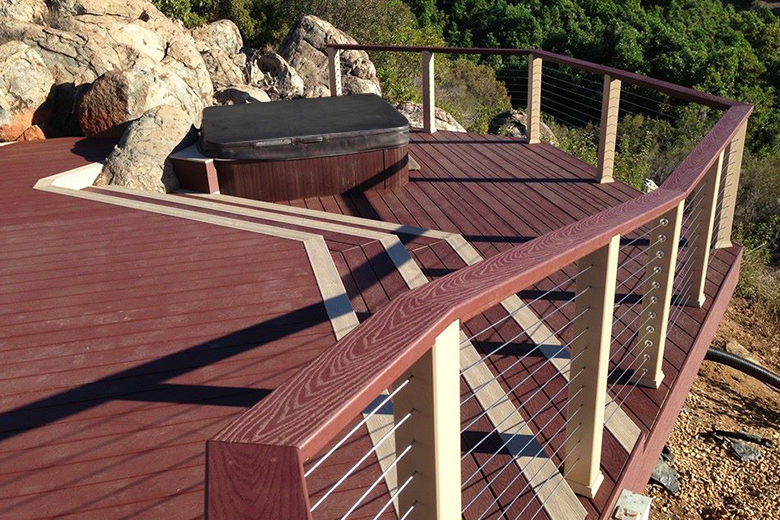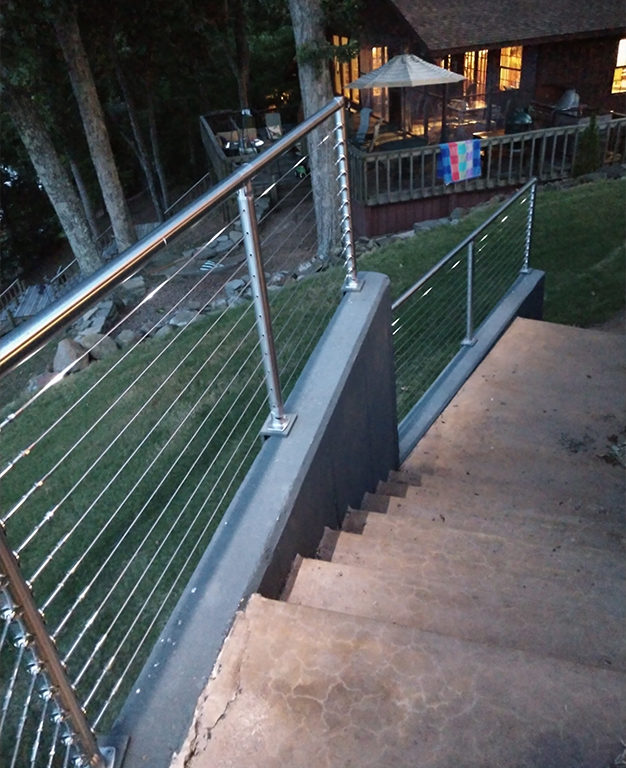Every successful cable railing installation project starts with a good plan. Whether you’ll be doing the installation on your own (DIY) or intend to hire a professional, you’ll need a step-by-step plan for guidance. The following is a skeleton guide you can use to plan for installing your cable railing. Since each railing installation project is different, we’ve only covered the essential primary factors.
The Basics: Purpose, Goals, and Local Codes
Begin by asking yourself why you need a railing system in the first place. Do you need cable railing for that specific application? If so, which railing style fits your application best? What materials will be the best fit for your location and railing size?
In homes located within 50 miles of the ocean and along roads that use de-icing, for instance, marine-grade stainless steel cables are the best choice for maximum corrosion resistance. Other applications, meanwhile, can use different railing material.
Start by doing research, including speaking to a few professionals to gain a better understanding of what you need. Always refer to your local building code officials prior to installing any cable railing system to ensure all code and safety requirements are met.

Materials: Cable, Posts & Components
Once you have a good idea of what you need, it’s time to get a quote for the necessary materials before purchasing. A cable railing system primarily consists of cable wire, railing posts, and cable components. Here’s what you need to know.
Railing Cable
All railing cables are formed by twisting together thin pieces of wire strands. Key factors to consider here, therefore, are:
- The number of wire strands used
- The thickness of each wire strand
- The twisting style
When assessing twisting styles, you’ll also notice that railing cables are described as 7×7 or 1×19, etc. Just remember that the first number represents the number of wire groupings in the cable while the second number is the number of wires in each grouping. For example:
- A 7×7 cable consists of seven groups of wires, each group comprising seven strands of wire
- A 1×19 cable, meanwhile, comprises 1 group of 19 wire strands that are twisted together.
Cable railing can be safe if installed right with the best materials. That said, cable is flexible and will deflect when pressure is applied thus the 3” maximum cable space and 4-foot maximum post space. Doesn’t it make sense to use the most rigid cable available to limit the deflection and create a safe railing? You should use only 1×19 cable construction with a minimum 1/8” diameter thickness.
To determine how much cable you need, multiply the length of the run by the number of cable runs needed and add a 20% allowance.

Railing Posts
Railing posts serve as the anchors for railing cables. There are two main materials to choose from – metal and wood. The two most popular metal options are:
- Aluminum
- Stainless steel
Two critical factors when choosing railing posts are strength and style. Fortunately, both metal and wooden posts are very strong and come in a range of styles to suit your house.
Additionally, be sure to consider mounting surfaces. Railing post mounting surfaces can be level, angled, or vertical. The surfaces are typically made of wood, composite, or cement.
Cable Components
Cable components primarily refer to tensioning materials needed to keep the cable railing tight. The components come in an array of shapes, styles, and sizes. Be sure to choose the right components based on your cables, posts, and style preferences. You can always ask a professional if you are unsure which is best for your railing.
Tools
Different cable railing projects require different tools. Some companies sell these tools in kits so that you can get everything you need for a particular project all at once.
How Much Time Do You Need?
Again, different projects will require different amounts of time to complete. However, for a straight forward project involving an average-sized deck, expect to spend 6-8 hours on it.
Now You’re Ready
Now it’s time to put your plan for installing your cable railing system into action. We recommend drawing a sketch of the structure to visualize the project. You can then list the measurements of your deck or other structure directly on the drawing. Additionally, you can list the materials, tools, and any other requirements on the same document. Then make your material order and get started on your new cable railing.